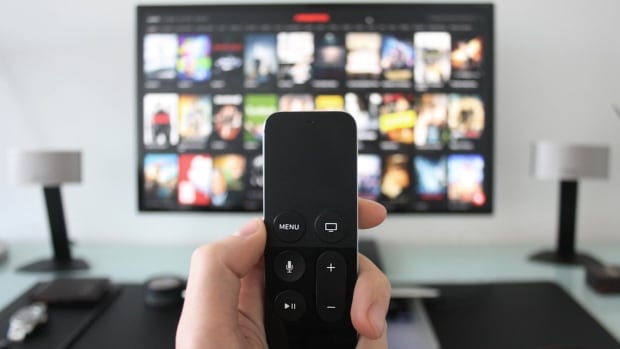
There are more options to stream TV shows, movies and music these days — from Netflix to Crave, Paramount+ to BritBox, and Rogers Sportsnet Now to Spotify.
But as those subscriptions add up, industry watchers point out that multiple options often come with a higher overall entertainment bill, with prices rising for services such as Disney+ and Spotify.
That means for many Canadians, the days of subscribing to one affordable streaming platform are gone — and they won’t be coming back, experts say.
That’s what it feels like for Star Trek fan Dyre Scheer-Peters in Calgary.
He previously subscribed to Bell Media’s Crave to watch all of his favourite science fiction programs, but was recently faced with having to add an additional monthly subscription to Paramount+ to keep watching Star Trek.

Several of the series’ programs migrated from the Bell-owned streaming service to a U.S. based competitor.
“It’s all these extra purchases and such. It’s becoming very annoying,” said Scheer-Peters, who had to keep his Crave subscription to be able to watch other programming.
“Crave had a bunch of stuff, it had almost everything,” he told CBC News. “It still has lots, but it has less than it used to, for the same price.”
For example, in 2016, Bell’s service launched, without advertisements, as CraveTV for $7.99 a month. It now costs $19.99 for the main Crave package, without advertisements.
Scheer-Peters has noticed. He says he now subscribes to multiple services totalling more than $100 each month in order to replace one or two services that used to include more programming at a lower price.
It’s a far cry from 2010, when Netflix first launched streaming in Canada for less than $10 a month. Many Canadians got used to paying for a single account and sharing the password among many users.

Lower prices not ‘sustainable’ for streamers: analyst
The gradual increase in total costs for media consumers isn’t a surprise, says John Buffone, vice president and media industry analyst at U.S.-based market research firm Circana.
“Inevitably prices were going to go up,” said Buffone in an interview with CBC News from New York.
Experts including Buffone point out prices for streaming services stayed low even as costs rose.
“When these services launched, they were launched at loss leader prices — prices that weren’t sustainable, that the companies knew weren’t sustainable,” he said.

And as both U.S. and Canadian economies have shifted in recent years, investors and shareholders have become less willing to invest in companies that aren’t delivering immediate profits.
“Wall Street basically said to Netflix, we want to see profitability, right? Subscriber growth is no longer going to be the bellwether of success for your company. We need to see profit coming from services,” said Buffone.
Paramount+, Amazon Prime and Rogers declined requests for interviews from CBC News on this topic. Both Netflix and Crave owner Bell Media did not respond to requests for comment.
Too many competitors and low margins
That message of low profit margins for streaming outlets is echoed by Vincent Georgie, assistant professor of marketing at the University of Windsor’s Odette School of Business and executive director of the Windsor International Film Festival.
He said companies want streaming profit margins to match the money they used to make from older, higher-priced cable and satellite TV bundles.
Streaming industry watchers warn that the days of low streaming bills are over as more services, like Netflix and Disney+, make moves to increase profitability.
“They’ve lost quite a bit and haven’t quite regained the profitability piece. There’s no doubt about that,” he told CBC News from Windsor, Ont.
Echoing a famous Canadian retail slogan, the film industry expert pointed out that consumers need to just get used to higher prices overall.
“The lowest price is the law? As far as streamers go, that’s not coming back.”

Georgie also predicts that with so many players, each charging between $10 and $20 a month, some services may not survive the competition.
“Some of these just will fold up, some will get acquired,” he said.
“I’m actually a bit surprised that it hasn’t shaken out yet because the margins aren’t attractive enough.”
